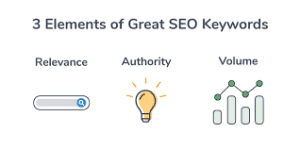
Creating a Successful SEM Budget: A Comprehensive Guide
Search Engine Marketing (SEM) has become a cornerstone for businesses aiming to enhance their online visibility. For creative brands in Spain, especially those navigating a competitive landscape, crafting a successful SEM budget is essential. Whether you’re a startup or an established brand, understanding how to allocate resources effectively can make all the difference in driving traffic, increasing conversions, and ultimately, growing your business. This guide will walk you through the steps to create a successful SEM budget tailored to the unique needs of creative brands in Spain.
Understanding SEM and Its Importance for Creative Brands
SEM involves promoting your brand through paid advertising on search engines like Google. Unlike SEO, which focuses on organic search results, SEM leverages paid strategies to get your brand in front of potential customers. For creative brands, this is particularly important as it allows you to target specific audiences with precision, ensuring that your marketing efforts are reaching the right people.
Spain’s digital market is rapidly evolving, with more businesses recognizing the value of a strong online presence. Creative brands must stay ahead of the curve by investing in SEM to maintain visibility in a crowded marketplace. A well-planned SEM budget ensures that your brand can compete effectively without overspending.

Step 1: Define Your Goals
Before diving into budget allocation, it’s crucial to define your SEM goals. What do you want to achieve with your campaigns? Common objectives for creative brands include:
- Increasing Website Traffic: Driving more visitors to your site to explore your portfolio, services, or products.
- Boosting Brand Awareness: Enhancing the visibility of your brand in the Spanish market.
- Generating Leads: Capturing potential clients or customers through targeted ads.
- Improving Sales: Directly increasing the number of sales or bookings through paid ads.
Each of these goals will influence how you allocate your SEM budget. For example, if your primary goal is to generate leads, you might allocate more funds to conversion-focused ads rather than brand awareness campaigns.
Step 2: Research Your Market and Competition
Understanding the competitive landscape is key to setting a realistic SEM budget. Research your competitors in Spain’s creative industry to see how much they are spending on SEM and which keywords they are targeting. Tools like Google Ads’ Keyword Planner can help you estimate the cost-per-click (CPC) for relevant keywords.
In Spain, certain regions or cities may have higher CPCs due to competition. For instance, targeting keywords related to “creative branding Madrid” might be more expensive than targeting “creative branding Andalusia.” By understanding these nuances, you can make more informed decisions about where to allocate your budget. Also Read About Website SEO: Achieve Remarkable Strides in Just 30 Days
Step 3: Choose the Right Keywords
Keywords are the foundation of any SEM campaign. For creative brands, it’s essential to select keywords that not only align with your services but also resonate with your target audience. Consider both broad and long-tail keywords:
- Broad Keywords: These are general terms like “branding agency” or “creative design” that can help increase visibility but may have higher competition and cost.
- Long-Tail Keywords: These are more specific phrases like “creative brand agency in Madrid” or “affordable logo design Spain.” They often have lower competition and can lead to higher conversion rates.
Balancing your budget between these types of keywords can help maximize your ROI.

Step 4: Allocate Your Budget
With your goals, market research, and keywords in place, it’s time to allocate your budget. Here’s a breakdown of how you might structure your SEM budget:
- Keyword Bidding: Allocate a significant portion of your budget to bidding on keywords that are most likely to drive conversions. Monitor performance and adjust bids as needed.
- Ad Creative: Invest in high-quality ad creatives that capture attention and resonate with your target audience. This includes both text and visual elements.
- Landing Pages: Ensure that the landing pages your ads lead to are optimized for conversions. This might require allocating part of your budget to web development or design improvements.
- Testing and Optimization: Set aside a portion of your budget for A/B testing different ad variations, keywords, and bidding strategies. This will help you refine your approach over time.
- Contingency Fund: Reserve some of your budget for unexpected opportunities or shifts in market conditions. This flexibility can be crucial in responding to changes in the competitive landscape.
Step 5: Monitor and Adjust
Creating a successful SEM budget is not a one-time task. Regular monitoring and adjustment are essential to ensure your campaigns are performing as expected. Use analytics tools to track key metrics like click-through rates (CTR), cost-per-conversion, and return on ad spend (ROAS).
For creative brands in Spain, it’s also important to stay informed about local trends and shifts in consumer behavior. The digital landscape can change quickly, and being proactive in adjusting your budget can give you a competitive edge.
Conclusion
Creating a successful SEM budget for a creative brand in Spain requires careful planning, strategic allocation, and ongoing monitoring. By defining clear goals, researching your market, selecting the right keywords, and regularly adjusting your strategy, you can maximize the impact of your SEM efforts. With a well-crafted budget, your creative brand can stand out in Spain’s competitive digital landscape, driving growth and achieving your business objectives.
For more information and resources, visit Flykez
